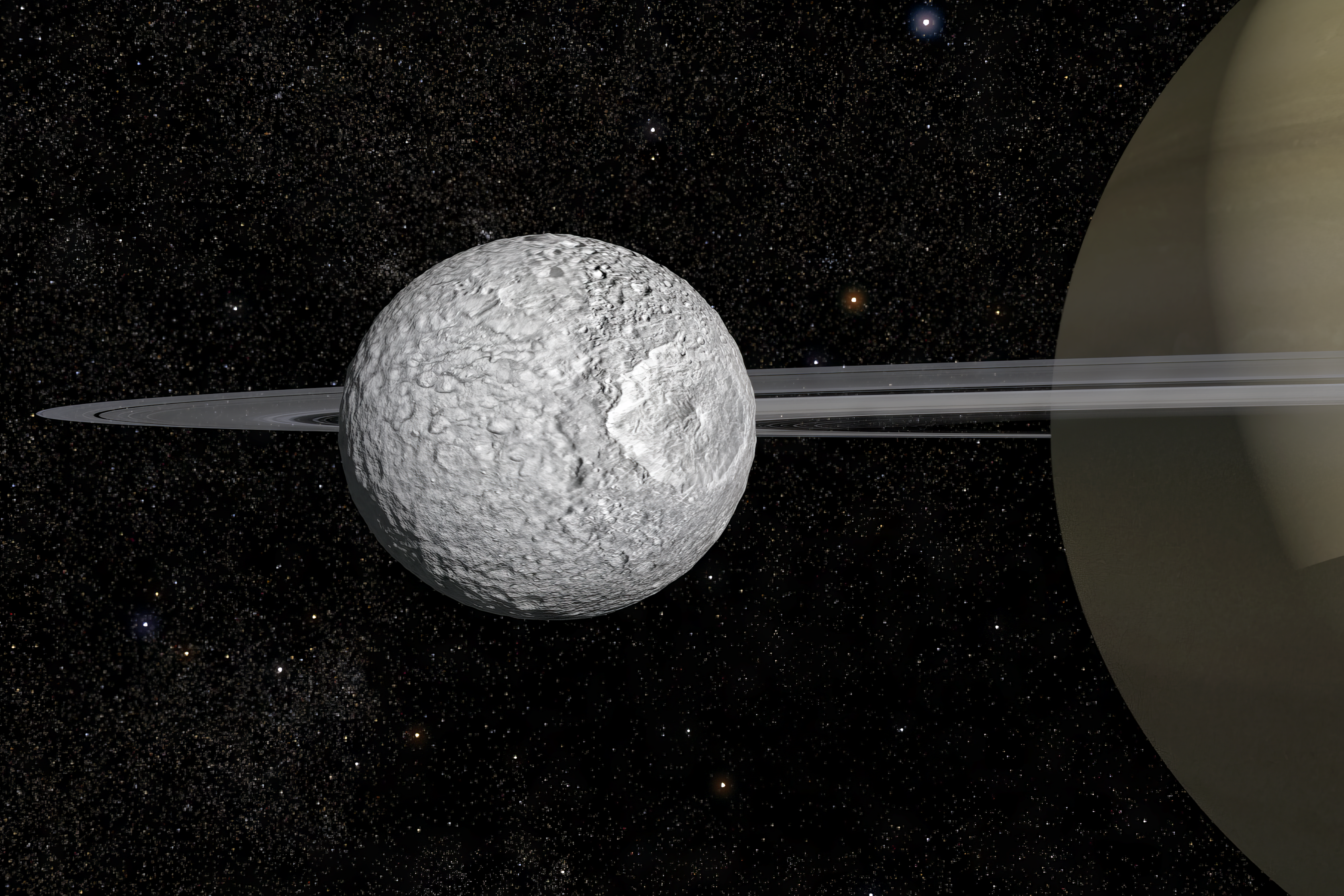
To planetary scientists, Mimas—one of Saturn’s moons—is best known for its uncanny resemblance to the Death Star in Star Wars. While Mimas most definitely isn’t a planet-destroying superweapon, nobody could say with any certainty whether an abundance of liquid water was hiding beneath its icy shell. But a new paper, published today in Nature, has called it: That’s no moon; that’s an oceanic world. And this newfound ocean, against all expectations, appears to be a proverbial newborn on the timescale of the solar system.
Fifty years ago few scientists would entertain the notion of oceans swirling about within the icy moons of Jupiter and Saturn. Heat to keep seas from freezing solid is hard to come by so far from the sun—unless it comes from the deep inner warmth left over from a world’s formation. But wee moons, it was thought, should have lost their meager embers long ago. In the past few decades, however, a succession of spacecraft has revealed the truth: Jupiter, Saturn and perhaps other planets of the outer solar system host several oceanic worlds, none of which require the ice-melting internal fires from their creation.
While the case for oceans in some satellites—namely Jupiter’s Europa and Saturn’s Enceladus—is now iron-clad, it has remained murky for many others, including Mimas. Theoretically, liquid water should flow beneath Mimas’s icy crust: Mimas has an elliptical orbit around Saturn that sends the moon swinging closer to the ringed planet and then farther away from it. This arrangement periodically squeezes Mimas in Saturn’s gravitational grip. In principle, that squeezing creates sufficient internal friction and heat to melt ice and sustain an ocean.
On supporting science journalism
If you’re enjoying this article, consider supporting our award-winning journalism by subscribing. By purchasing a subscription you are helping to ensure the future of impactful stories about the discoveries and ideas shaping our world today.
But…
Read the full article here






